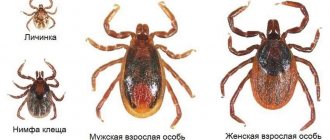No matter how much we would like it, not all births occur without complications. Even if the first few births for a bitch went without difficulties, complications may arise during subsequent ones. Birth pathologies can be of a different nature: some may be associated with the individual characteristics of the dog’s physiological structure, while others may be associated with the unacceptable position of the puppies in the uterus, their death, etc.
All pathologies of golden retriever births can be divided into 2 types:
- those that arise from a cause dependent on the mother dog, and
- those that occur for a reason dependent on the puppy.
Pathologies can also be divided according to the principle of assistance provided:
- those complications that the dog owner himself can help with;
- those complications that require the intervention of a veterinarian exclusively (complications that are more dangerous to health and life).
It is impossible to predict how events will develop: during the course of labor, various emergency situations may arise, some not very scary, and some requiring qualified assistance from a veterinarian.
That is why, in order not to tempt fate, it is advisable to have a doctor present during childbirth , especially if the dog is whelping for the first time, if it is out of condition (overfed, excessively skinny) or “aged.” The best thing is to invite a specialist to your home: here the dog will feel comfortable and confident, and will not experience unnecessary stress, but you can (of course, in advance) assign the golden retriever to the veterinary clinic.
If you did not invite a veterinarian to the birth, and complications arose during whelping, be sure to call a doctor at home as soon as possible! Because transporting a giving birth dog to a veterinary hospital is an extremely dangerous event for the life of the dog itself and for its offspring! It is best to always agree with your doctor about childbirth in advance!!!
When it is not possible to call a veterinarian
It is possible that there are situations when there is absolutely no way to call a veterinarian at home. In this case, the dog owner may be required to provide medical care that he would not otherwise be responsible for. But it is worth paying due attention to the fact that whatever the circumstances, the breeder should not use any tools
. Medical instruments in the hands of an inexperienced person can turn into the worst enemy for a giving birth dog and its offspring! It would be very helpful if you had a list of veterinary first aid telephone numbers and a veterinarian’s telephone number on hand - they will be able to advise you in this situation.
How to alleviate and prevent toxicosis
If a dog is suffering from vomiting due to toxicosis, you should provide it with access to drinking water, calm the animal and give an injection of glucose. Glucose will prevent dehydration of the body when refusing food and water, and will restore strength to the pet. You should not wait for the animal to return to normal on its own. You should go to the veterinarian, or call a specialist at home if it is not possible to take the dog to the hospital.
At the Kaliningrad Regional Clinical Center, your pet will be provided with qualified care - we provide veterinary services both in the veterinary clinic and at home. The doctor will conduct a visual examination, prescribe tests and diagnostic studies. For toxicosis, the following treatment and preventive measures are most often used:
- restoring water balance in the body with the help of medications that are administered to the animal through droppers;
- the use of vitamin preparations when signs of micronutrient deficiency are detected;
- if allergies occur, the doctor prescribes antihistamines that do not cause side effects in the animal;
- hormonal drugs if appropriate indications exist.
The veterinarians at our clinic in Kaliningrad and Svetlogorsk have all the necessary tools to diagnose and treat a wide range of diseases. The pharmacy stocks medications for animals. After visiting a specialist, you won’t have to look for where to buy the necessary medications. If necessary, we hospitalize dogs, and the veterinarian also gives recommendations on caring for the animal during pregnancy and the postpartum period. You can make an appointment or call a doctor at home by calling our clinic.
Poor circulation in a pregnant dog
In the case of multiple pregnancy, the dog may experience a complete loss of strength, or so-called collapse, already a week before giving birth. In this condition, the dog is inactive and spends most of its time lying down with its hind legs extended back, breathing heavily. This happens because the huge uterus compresses not only neighboring internal organs (liver, spleen, lungs), but also large blood vessels, as a result of which the dog’s blood pressure drops and the blood supply to the internal organs is disrupted.
If your dog's behavior matches the description of the symptoms of this complication, do not waste time, call your veterinarian. If there are no more than 7 days left before the expected whelping date, a cesarean section is the best thing that can be done in this situation.
Here are some of the most common complications
which occur in Spitz dogs during childbirth.
How to arrange a dog bed?
- Where to arrange a place for childbirth? You can place your dog in one place after giving birth and in another place before giving birth. In any case, make arrangements in advance. A place somewhere away from doors and drafts will do. What should the place be like? Dry, spacious, comfortable, soft, warm, durable, open (this will make it easier for you to access the puppies, and the pet will feel better next to its beloved owner).
- Which is best? Large box or playpen. Important: make one of the walls of the dog house slightly lower than the others; the dog should be able to leave its hiding place if desired, but the puppies should not.
- Separate place for childbirth. A large bed or sofa, which needs to be covered with a diaper and a sheet, is suitable. This solution is beneficial for large four-legged friends.
- Heating system. A special lamp or heating pad will help. In the first days of the week, the temperature should not fall below 28 degrees, after which it can be gradually lowered to 20.
Remember: after giving birth, the box where you put the litter should be replaced.
Large puppy, puppy without signs of life, incorrect presentation of the puppy
If 2-3 hours have passed since the start of contractions, the bitch makes intense attempts, but the puppy does not show up, the reason for this may be the reasons listed above.
In such a situation, you need to understand that one delayed puppy can cause the death of the remaining puppies in the bitch’s uterus. Most often it happens that after a difficult birth of the first puppy, the rest are born without difficulties, provided that the bitch was given help and she did not waste her strength on fruitless attempts to push the puppy out.
If during delivery you notice signs that at least somehow indicate that the puppy is delayed, call a doctor immediately.
Since the signs in all these cases are quite similar, only a specialist can understand what exactly happened. After finding the cause of the complication, the doctor will first make the necessary injection and watch: if the puppy does not appear after the assistance provided, he will decide on the need for a cesarean section. And the faster the bitch receives help, the greater the chance that subsequent puppies will survive.
It is very important to provide first aid in a timely manner, because a retained fetus, if it is already dead within 24 hours, is a huge source of infection that threatens the health of the bitch. The more time it spends in the dog’s body, the more its condition will worsen, which will lead to the fact that the bitch will not be able to feed her cubs in the best case, or will die in the worst case.
If contractions and pushing continue for 2 hours, you need to check whether the puppy has reached the exit into the bitch's pelvis and whether he is moving further along the birth canal.
You can tell if the baby is in the pelvis by feeling the dog’s belly. To do this, place your hand under her belly with your thumb on one side of her belly and the rest on the other. Try to carefully feel the puppy through the dog’s skin and thereby determine its location. You also need to feel the dog’s perineum with your free hand: do you feel something hard under it, and also understand whether the puppy’s head has passed through the pelvic opening.
Next, you should make sure that the baby does not move along the birth canal towards the vagina. You need to cut and file your nails, wash your hands very well and treat them with an antiseptic such as synthomycin emulsion, for example. Then gently insert your finger (little finger) into the bitch's loop until you feel the puppy. Take a break for 20 minutes and repeat the procedure. Draw a conclusion about whether the position of the fetus has changed or not. If the puppy remains in the same place, immediately call a veterinarian or, if this is impossible, immediately call an emergency veterinarian.
Large puppy
If the puppy is quite large relative to the size of the birth canal, during birth problems arise with the movement of such a puppy along the birth canal. There are complications associated with the large size of the puppy, in which the puppy may only appear slightly out of the loop and no longer move out. In such cases, you can help the dog with your hand.
. You should first take all precautions: cut your nails and file them, wash your hands thoroughly and lubricate them with an antiseptic (pre-prepared syntomycin emulsion). Then proceed directly to help: insert your finger into the dog's loop so that you can hook the puppy. During the beginning of the wave, push as gently as possible, but at the same time strongly pull the puppy in an arc: towards you and down.
Dead puppy
If the puppy begins to show itself during pushing, and you are absolutely sure that it is not showing signs of life, during the next series of pushing you need to try to pull the puppy out. This is important so that the remaining puppies are born alive and do not suffocate in the birth canal, being detained dead.
Malposition
During whelping, only two presentations of the fetus are considered normal - cephalic and pelvic. With a cephalic presentation, the puppy passes through the birth canal head first, and with a breech presentation, accordingly, with the pelvis.
One of the abnormal presentations of a puppy is cervical presentation. This means that the puppy's head is turned inward, and he approaches the pelvic opening of the bitch with his neck. This position of the puppy prevents its smooth exit from the vagina.
The sooner the veterinarian understands the reason for the delay in labor, the greater the chance of saving the dog and its puppies.
Stuck Puppy
Complications during whelping can occur even if the puppy is presented correctly. One such complication is a stuck puppy. It may happen that during childbirth, the puppy emerges halfway from the bitch’s vagina... and stops, as if stuck: the bitch has a spasm of the vaginal muscles, and they have captured the puppy in a death grip.
In this situation, you cannot pull the puppy! This way you can damage it. You need to give the bitch an injection of an antispasmodic agent: 0.5 ml of no-shpa into the tubercle located just above the dog’s loop, or 1 ml intramuscularly. A few minutes after the injection, the spasm will disappear and the muscles will relax. If the puppy does not begin to move forward in the next series of pushes, you will need to assist the laboring dog. To do this, cut off the legs (if you have not done this before), wash your hands, treat them with syntomycin emulsion and try to insert your finger as carefully as possible either under the puppy or to the side of it. Try to help him get out by slightly pulling the puppy in an arc downward. Do not pull the puppy under any circumstances!
What are the signs that labor will begin soon?
A dog’s behavior before giving birth can be calm or, on the contrary, nervous and aggressive. It is quite difficult to try to determine by external condition how many hours later your pet is expecting a replenishment. Just take a closer look at your dog and you will see the very signs of a dog before giving birth.
- A place for future puppies. The bitch will do her best to slowly equip a new house for her cubs. You will probably notice how the pot-bellied miracle carefully drags all sorts of rags and soft things past you into its bed or any other place.
- Tasty food. Everything tasty that you give your dog, she does not eat right away, but hides it somewhere in the house.
- Aggression or calm? The female can show aggression towards others in order to protect her offspring, or be indifferent to everyone. It can especially “fly in” to those who get close to the expectant mother’s bed.
- Saggy belly. A dog's belly sags before giving birth. If you look at your pet from above, she appears thinner than before. A saggy belly is a sure sign that the puppies are almost ready to go outside.
- The external genitalia become enlarged.
- Mucus discharge may also be present.
- Milk. In the eighth week, you may notice drops of milk near your nipples.
Narrow pelvis
The narrowness of the dog's birth canal can also cause complications. The cause of a narrow pelvis is either a deviation in the anatomical structure of the dog’s skeleton, or rickets or pelvic injuries suffered in childhood. Although rickets is extremely rare, since there are a huge number of special medications designed to protect the puppy from this disease, it is worth keeping in mind that this deviation does occur.
If you have reason to think that your dog may have a narrow birth canal, conduct appropriate research, and if the diagnosis is confirmed, the right decision would be to refuse mating altogether.
If a dog gives birth with a similar pathology, during the process of the bitch’s attempts, the puppies’ membranes appear for a while from the loop and disappear as soon as the series of attempts is completed. If the dog fails to give birth, she must have a caesarean section. Ineffective attempts and contractions not only tire the dog, but also have an extremely negative effect on the muscles of the birth canal: they become tired and swell, which can lead to rupture and prolapse of the vagina. Don’t tempt fate: at the slightest suspicion of this pathology, call a doctor, his help is necessary!
Types of toxicosis
There are three main types of pathological conditions associated with intoxication of the body during pregnancy:
- light form. The bitch may become picky about food, short-term bouts of apathy appear, and vomiting occurs sporadically. If early toxicosis has not passed by the beginning of the second month of pregnancy, the pet must be treated;
- acute form. Appears in late pregnancy. The main signs of a serious condition are the presence of bile in the vomit, lack of appetite, and refusal to drink. To prevent the dog from having a miscarriage and the animal itself not reaching an extreme degree of exhaustion, in case of toxicosis in the later stages, immediately contact the clinic;
- before childbirth. If your bitch is not eating well and is vomiting in the last week before giving birth, do not hesitate to contact your veterinarian. This condition is dangerous because the animal can fall into a coma or lose puppies. Medical supervision will help avoid dangerous consequences.
Weak labor activity of the dog or absence of labor activity
This means that after long and fruitless efforts, the uterus becomes exhausted, contractions and accompanying efforts can either become very weak or stop altogether. This can occur both from the very beginning of labor and after the birth of several puppies.
reasons for this problem: poor condition, old age, lack of physical activity, various past illnesses, lack of vitamins, hernia and others. If you know that your dog has a hernia and you are planning to breed the dog, make sure that the hernia is removed at least six months before the planned breeding. Another reason for weakened labor may be a disorder in the hormonal balance of the bitch, which can be attributed to poor heredity. Dogs with these abnormalities experience more frequent disturbances in the estrus cycle compared to other dogs.
If you notice that the dog has no contractions or attempts (or they are very weak) for 12 hours, it is necessary to enhance labor artificially without the use of various stimulants.
Giving your dog such hormonal stimulants, such as oxytocin, would be a big mistake on the part of the dog owner! Injecting the drug before the cervix is fully dilated or taking an excessive amount of it (read overdose) can lead to serious, even fatal, consequences for both the dog and the puppies. Hormonal stimulants are extremely powerful drugs that can cause uterine wall rupture or uterine inversion.
Only a veterinarian can decide on the need for its use after determining that the bitch’s birth canal is fully dilated, that is, the cervix is well dilated, that the bitch’s pelvis is not narrow, that the fetus is of normal size, located without abnormalities, and that the dog itself looks and feels Fine. Before giving an injection of a hormonal stimulant, the veterinarian decides on the need to administer a solution of calcium salts to stimulate contractions. After about 10-20 minutes, contractions will begin, and the puppies will appear quite quickly and easily.
If the use of a hormonal stimulant does not have an effect, the veterinarian will perform a caesarean section.
Sometimes, based on the results of examining the bitch, the doctor immediately decides on the need for a caesarean section without using a stimulator simply because it will not help in this situation: for example, if the size of the puppy does not correspond to the size of the pelvic opening.
Sometimes such complex and difficult births occur that a dose of a stimulant is necessary for the birth of each puppy. In such a situation, contractions become very strong, the uterus quickly becomes exhausted and stops responding to such injections.
So, you've changed your mind about giving your bitch a stimulant injection, but you can still help your beloved dog.
To stimulate labor before the birth of the first puppy, give your dog injections of the following medications:
- 2-3 ml of ascorbic acid intramuscularly;
- 5% glucose solution subcutaneously or intravenously (that is, using a dropper) at the rate of 5-10 ml per kilogram of the dog’s weight;
- 10% solution of calcium gluconate intramuscularly at the rate of 0.5 ml per 1 kg of animal weight.
Don't forget to wash your hands thoroughly first; use exclusively disposable syringes, as well as alcohol to disinfect the injection site. When medical assistance has been provided, begin a special massage of the dog in order to enhance labor.
So, massage to intensify contractions
:
- Using light hand movements, massage belly
from head to tail. If you feel a wave of pushing along the dog’s stomach and sides, follow it with your hand, as if intensifying it. - After lubricating your hands with baby cream/vaseline/baby oil, use your index finger and thumb to massage the base of
your dog's tail, as well as the area
between the dog's butt and his anus
. - Massaging
the dog's nipples, as well as expressing a small amount of milk, helps stimulate labor - Internal vaginal massage
. To do this, you need to wash your hands thoroughly, trim your nails and file them well so as not to scratch the delicate mucous membrane, and lubricate the finger involved in the massage with synthomycin emulsion. Do not insert more than one finger into the vagina of dwarf dogs, in particular Pomeranians! To perform a massage, insert your little finger into the vagina in a forward-upward direction and massage its walls, performing circular movements with your finger. With your other hand (or with the help of your assistant), simultaneously massage the dog's stomach in the direction from the ribs to the groin in rhythm with the pushing. At the moment when contractions appear, remove your finger from the vagina. If contractions do not appear within 3 minutes, stop stimulation and repeat it after 15-20 minutes.
If, after carrying out all the described measures, as well as in the absence of results from drug therapy, the bitch cannot give birth, you need to immediately seek help from a veterinarian! Most likely, a caesarean section will not be possible.
Important!
In addition to the fact that procedures for inserting a finger into a bitch’s vagina are extremely unpleasant for a dog, they are quite dangerous, since there is still a chance of introducing microbes to the bitch’s mucous membrane. Therefore, this measure should only be resorted to in the most exceptional circumstances.
It also happens that contractions weaken after the birth of one or more puppies.
Help in this situation is identical to that suggested for inducing labor before the birth of the first puppy, except that at this stage (that is, after the birth of one or more puppies), you can give the dog 1 ml of oxytocin IM if your vet approves! Usually, after injection of the stimulant, the dog’s labor activity improves, as a result of which a puppy is born after 5-10 minutes. The administration of oxytocin can be repeated no earlier than 2 hours after the birth of the puppy and provided that the dog gives birth after the injection.
But, despite the use of a stimulant, the bitch is not always able to give birth without the intervention of a specialist. Therefore, if the simulator did not help the dog (she did not give birth), call the veterinarian immediately, because the bitch needs to have a caesarean section, and the sooner the better for everyone!
Visit to the veterinarian
After detecting the listed signs, make an appointment with a veterinary clinic. Plan a visit no earlier than a month after mating. By this time, relaxin, a sex hormone, will appear in the blood of the expectant mother, on the basis of which an interesting position is confirmed.
Determining the number of fruits
In addition to examination, palpation and blood tests, diagnosis involves ultrasound and x-rays. These procedures help determine the exact number and condition of the fruits, but not earlier than the beginning of the 2nd month.
Exclusion of pathologies
A visit to the veterinary clinic is recommended even if your four-legged pet is in good health. Not all pathologies are determined visually. Diagnostic procedures help to detect hidden complications and prevent their development.
Absence of labor
If you notice that after the bitch’s water breaks, contractions do not appear for some time, that is, labor is completely absent, seek help to the vet! Do not leave the dog alone at this point because there is a very high possibility of death of the dog and puppies.
The reason for the absence of contractions and pushing may be adhesions formed after a previous cesarean section.
How to understand that your pet is pregnant?
In the early stages it is impossible to say anything. Sometimes the bitch becomes quieter, more peaceful, eats a lot or a little. You can notice something only in the second month of gestation:
- The belly is getting bigger.
- Weight increases.
- The mammary glands protrude and slightly change color at the nipples.
- There is something like a mucous discharge coming from the genitals.
- Gently feeling the stomach, you feel hard lumps.
The extreme and already “finishing” factor is that the dog tries in every possible way to arrange its home for the puppies. You will notice it immediately and will not confuse it with anything. It is better to go to the veterinarian in the second month and get an x-ray to know how many babies to expect.
Inelastic soft tissue of the vagina (birth canal)
This problem is not a pathology, but a distinctive feature of childbirth in dogs that are whelping for the first time. As soon as the bitch gives birth to her first puppy, this problem disappears. And in order to ensure a problem-free birth for the first puppy, you need, as with a dry birth, to use Vaseline oil, which has been previously sterilized in a pan with water for 2 hours and cooled to room temperature. Lubricate the inside walls of your dog's vagina, then try to gently stretch the vaginal tissue, making it more elastic. Your hands should also be sterile (washed with soap and treated with alcohol), your nails should be cut short and filed.
If after this procedure the bitch cannot give birth to a puppy, carefully tear the amniotic sac of the puppy and slowly pull the puppy towards you in time with the attempts made by the bitch. Such childbirth is quite painful for the dog - it may squeal. But the pain ends with the birth of the first puppy, the rest of the babies are born easily and quickly.
The doctor present at the birth can make an incision on one of the dog's labia to help the new puppy and bitch being born. And since an open wound can become infected, you should try to avoid surgical intervention during childbirth.
Caring for newborn puppies
Caring for newborn puppies is not as difficult as it might seem at first glance, but it requires your patience and a fair amount of fearlessness. If the puppy whines and worries, then most likely it is not from hunger. Most often, it is enough to empty his intestines of gases and feces. To do this, place the puppy on your left palm with its head up and empty the bladder by giving a light massage in the area of the urinary opening - after a few seconds the urine will pass out. Then massage the puppy's tummy clockwise, then around the anus and the hole itself. If the puppy has not recovered after this procedure, you can lubricate the ball of the eye scapula with any fat and carefully insert 5-6 mm into the puppy’s anus. Most often, these manipulations lead to the desired result: the baby calms down and begins to suck.
If the puppy was born weak and does not take the nipple, it should be placed on it, opening its mouth and at the same time squeezing milk out of the nipple. It may take time, but eventually he will start sucking on his own. A very weak puppy should be pipet-fed with his mother's expressed milk, or at least partially with it, alternating with formula milk.
If a bitch has given birth to many puppies and there are not enough nipples for all of them, you can divide them into two groups and place them under the bitch alternately every 2 hours (“resting” puppies should be placed in a cardboard box on a warm heating pad covered with a diaper).
Remember: for the first three days you need to constantly monitor the bitch and puppies. An exhausted dog, falling asleep, can crush the puppy. If you attach strips around the perimeter of the nest (10 cm from the litter), this danger will be minimized.
If the puppies are restless, squeaking, crawling in different directions, they are hungry. It is necessary to check whether the mother has enough milk; if not, then the main reason for its absence is its insufficient and inadequate feeding. Feed your bitch well and you won't have any trouble feeding your puppies.
Puppies are born blind and deaf. Only their taste and smell are well developed. They begin to hear after 6 days, insight occurs on the 11-14th day, teeth erupt after the 21st day. An indicator of slow development of a puppy is the absence of teeth, usually in the lower jaw, by the 30th day. In this case, the commission that examines the puppies may rate the litter a lower score.
Puppies of certain breeds have their tail docked on the 3-5th day. It is better if a club specialist does this.
Cubs aged 10 and 20 days need to have their claws trimmed and their front paws well treated with a nail file.
Retained placenta (placenta with membranes)
The practice of dog breeding shows that it is often the release of the placenta that is delayed after the birth of the last puppy.
Within 2-5 hours after birth, the placenta may come out on its own. It is very important not to miss this moment! Do not leave the bitch alone, but while on a walk, carefully look to see if the placenta has passed, since it is very similar to dog excrement.
If the placenta does not pass away on its own within the specified time, it is necessary to provide the bitch with first aid. Give the dog an injection of 1 ml of oxytocin, then place it on its hind legs in the bath, start pouring warm water from the shower over the dog’s stomach, combining this with a gentle massage of the stomach from top to bottom.
Usually this procedure is quite sufficient to solve the problem of placenta retention.
The placenta remaining in the birth canal can lead to purulent inflammatory processes in the uterus (metritis), and this is deadly!
If you have even the slightest doubt that the placenta has not passed away, you need to show the dog to a specialist. Qualified help consists of giving the bitch a special hormonal drug that causes contractions of the uterus, as a result of which the placenta soon comes out. Plus, the veterinarian will inject an antibiotic that prevents the development of infection.
Preparing for childbirth
During the first half, the skeleton and internal organs of puppies are actively formed. You can follow the usual diet and maintenance. It is advisable to carry out walks on a leash to limit contact with other animals, drinking from puddles and other disobedience. Already from the first week, the dog’s feeding should be adjusted - the daily diet should be balanced according to BJU, enriched with vitamins and minerals. It is advisable to purchase special food for pregnant (nursing) bitches.
When your belly is clearly visible, gradually reduce your walking time and daily activity. Do not allow the dog to jump and run a lot (this is important for huskies, large terriers and other active breeds). It is recommended to help climb steep steps. Avoid contact with other animals completely. The dog should get a good night's sleep; it is important that it has its own bed.
10 days before the planned birth, you should prepare a “nest” for future offspring. The main requirement is the presence of sides so that the puppies cannot crawl out or fall. Loads should be eliminated completely, going outside only to relieve yourself.
Photo: wikimedia.org
Choke puppy, reviving weak puppies
In the case of complex and lengthy labor, in which the puppies remain in the mother’s birth canal longer than normal, a complication such as a “choked puppy” occurs. When born, such puppies appear dead: they do not move, do not squeak, have a thin and flat elongated body, often due to lack of oxygen they are bluish in color, especially the face and paws. But it is only at first glance that they seem unviable: if such a puppy is immediately given first aid, he can be revived. So there is no need to write off the puppy without trying to revive it for at least 10 minutes. Puppies that were born by caesarean section should also receive artificial respiration and a warming massage using heat. The fact is that they may have breathing problems due to the anesthetic that entered their body through the blood from the mother.
Resuscitation of a choking puppy
To start the process of pulmonary breathing in a weak puppy, you need to carry out a number of procedures:
1. Clearing the respiratory tract of mucus or liquid present in them.
To do this, first wipe the puppy’s nose and mouth with clean gauze or cotton cloth, then securely fix the newborn with your hands (one for the neck and head, the other for the spine), lift it and shake it several times from top to bottom. The shaking movements can be compared to the movements made when chopping wood. Just be careful: the puppy may slip out of your hands - wipe it with a dry cloth or gauze.
It is advisable to perform this procedure on all born puppies without exception.
Then take the puppy by the tail upside down and, wrapping your lips around the puppy’s mouth and nose through a thin sterile diaper or gauze, suck out the liquid from the puppy’s mouth and nostrils and spit. Hold your puppy in this position for a few more seconds, then lower him and begin to follow these steps to revive him.
2. Rub the scruff of the neck vigorously
newborn baby against hair growth.
3. Pull out the puppy’s tongue and place 1 or 2 drops of valerian or cognac on the back of it.
4. Ammonia can make the puppy take a breath: let the puppy sniff a drop of ammonia
on a piece of cotton wool.
5. If you manage to get the puppy to start breathing, but his breathing is uneven, you should resort to artificial respiration
. To do this, take the puppy with both hands so that it is located across your palms (the head should be in your right hand, and the tail in your left) and as if hanging with its paws down, begin to bend and unbend the puppy in the direction of head to tail. Perform these movements ~20 times per minute. This procedure will normalize the breathing rhythm.
Also, to stimulate breathing and the work of the heart muscle, squeezing the chest will help: place the puppy with its back down, for example, on your lap, and begin to lightly press on the puppy’s chest according to the pattern of 1 pressure per 1 second, accompanying artificial respiration by flexing and extending all the baby’s legs.
6. rubbing
of the puppy, wrapped in a hot, dry towel,
has worked well to revive puppies .
7. To stimulate breathing, follow this procedure: take the puppy in your hands and alternately turn it head down, then tail. During this procedure, the newborn’s lungs will either be compressed under the weight of the abdominal organs, or expand. Repeat these movements for approximately one minute at a rate of one inversion every three seconds.
8. If all of the above measures do not have the desired effect, you should resort to contrast baths
. Prepare two containers with cold and hot water and begin to alternately place the puppy in one container, then in the other so that the head remains above the surface of the water. Repeat several times.
If the puppy does not show signs of life after all resuscitation procedures, repeat everything from the beginning. Don't stop trying until your puppy takes a good deep breath. But if within 15 minutes the newborn has not “come to his senses,” alas, you will no longer revive him. Also, you are unlikely to be able to revive a weak puppy with a white tongue, but it’s still worth a try.
All procedures to revive the puppy and stimulate pulmonary respiration should be carried out in a sufficiently warm place.
It often happens that it is the first puppy that ends up choking, and after its birth, subsequent puppies are born without problems and quite quickly. In this case, it may be more appropriate to sacrifice the first puppy in order to help the stronger living puppies.
Lively puppies remain weak at first and may find it difficult to suckle, so give them special attention and help until they gain strength.
How does a dog behave before giving birth?
To the above, it should be added that during the prenatal stage the pet is worried, struggling to arrange its bed, and the pet’s heavy breathing is felt. Plus, your four-legged friend can look under her tail while she waits. The behavior of a dog before giving birth can make the owner worry, but you should not show your worries, as this will affect the expectant mother. Your floor may also be damaged as the dog will dig at it. She can also hide in dark corners so that no one can see her. Sometimes a dog before giving birth becomes the “tail” of the owner and follows him absolutely everywhere. This happens because your pet is already feeling the first pain. Her eyes are focused on nearby objects, and her tail is in a strange position (stretched back, tip down).
Summary: when a doctor is needed
Let's summarize and, in the form of abstracts, note those moments in which the presence of a doctor is strictly necessary, because it will help save the life of a giving birth dog and its offspring:
- ineffective long-term (more than two hours) contractions and attempts. Be sensible and don't let your dog suffer for such a long period of time;
- weak labor activity/absence of labor activity;
- large puppy, malpresentation of the fetus, infertility;
- prolonged gestation of puppies, that is, the absence of labor later than the scheduled due date (pregnancy more than 65-67 days);
- the presence of bloody, brown or green-tinged vaginal discharge during pregnancy or the onset of labor;
- not all the placenta passed away/puppies died during childbirth, while the dog’s body temperature exceeds 39.5 degrees Celsius;
- you are not sure that the dog gave birth to all the puppies;
- heavy breathing, a blank look, convulsions, copious bright scarlet discharge during childbirth, or abruptly stopped attempts - evidence of a rupture of the vagina or uterus - call a doctor immediately!
- Increasing weakness, pallor of the mucous membranes (tongue and gums), loss of consciousness may indicate severe internal bleeding - call the clinic immediately!
Causes
Your dog may pant during pregnancy for several reasons. These include :
- excessive heat,
- excitement or anxiety
- pain,
- eclampsia (low calcium levels in the blood),
- other underlying medical conditions such as heart or lung disease.
This may indicate the onset of labor or problems with the pregnancy. Therefore, if the panting is excessive, unwarranted or prolonged, or your dog appears distressed at all, contact your veterinarian immediately.
© shutterstock
Vaccinations, antiparasitic treatment and treatment during pregnancy
Vaccination is carried out strictly before mating, since the administered drugs can cause abnormalities in development or death of the fetus. Mother's immunity is transferred to babies during feeding and lasts up to 2-2.5 months.
Treatment against parasites is also recommended before mating, namely 14 days before the meeting of future partners. Anthelmintics are quite toxic, so they can negatively affect the health of puppies. Pregnant bitches are only allowed to take anthelmintic drugs if they are directly infected. In this case, the animal is given more gentle anthelmintics: Milbemax, Prazitel, Drontal Plus.
Any treatment is carried out only under the guidance of a veterinarian. The drugs are selected individually, taking into account their effect on the body of the expectant mother and her babies.
Pregnancy
Dogs can easily become pregnant during their fertile period, also called estrus, which occurs on average every eight months and lasts up to three weeks. At this time, your pet can often enter into active clashes with the male dog pestering her. This happens if the dog feels that it is not yet ready for mating. That is why during the period of heat, in order to avoid such clashes, as well as mating with unfamiliar males, it is recommended to walk the dog on a leash, keeping it under control at all times.
"Nesting" and agitation
The main sign that your dog is about to give birth is usually called "nesting." This is how the dog prepares the place for the arrival of its puppies. Your dog will begin this nesting a couple of days before giving birth, as nesting usually occurs in the last week of a dog's pregnancy. When you notice your dog trying to make a nest, know that she will probably give birth in a few days.
Nesting is carried out by hormones that let the dog know that puppies are about to be born. Therefore, she will look for a secluded and comfortable place to give birth to her puppies. She may tear newspapers or rags to make it more comfortable. If it has its own bed and it is in a good location, the dog may choose it as a nesting area, as well as for working and giving birth. You can also prepare a special bedding or box for the dog's birth, lining it with soft rags or newspapers. If you're worried about where your dog might give birth, introduce her to the puppy crate or crib in the last few weeks so she knows it's a good place to give birth.
Another sign that your dog is close to giving birth is that he will become more restless and agitated. Don't worry if she gets irritated, as this is a normal symptom for a dog who is about to give birth. A very obvious sign that your dog is going into labor is if he lies down on the prepared bed but seems uncomfortable. A dog who has gone into labor will move around a lot and change positions constantly, trying to find a comfortable position for labor.











